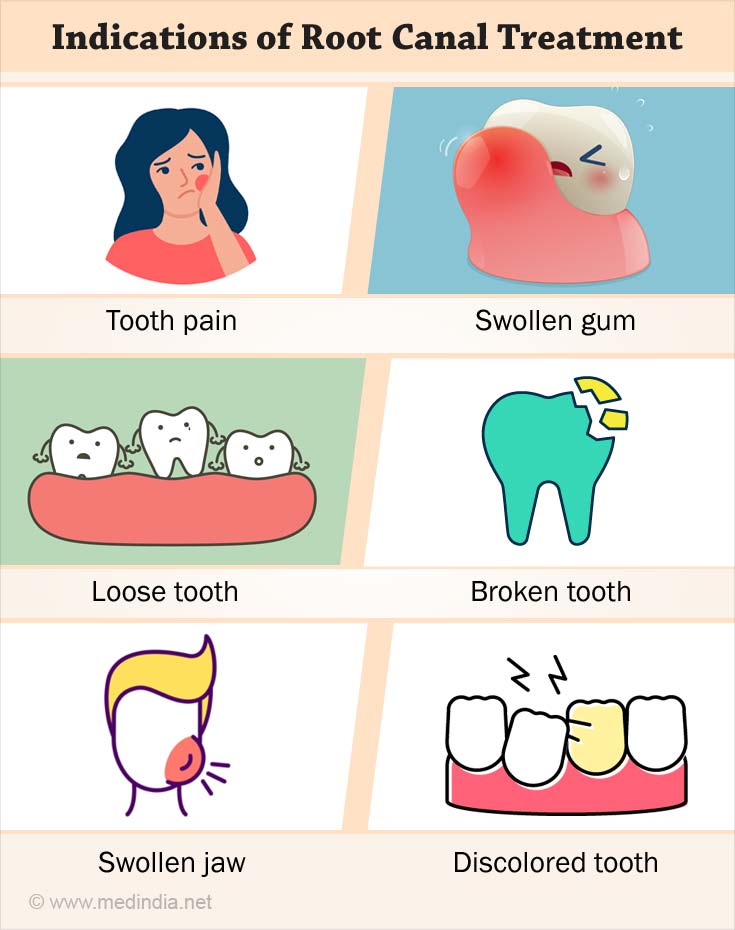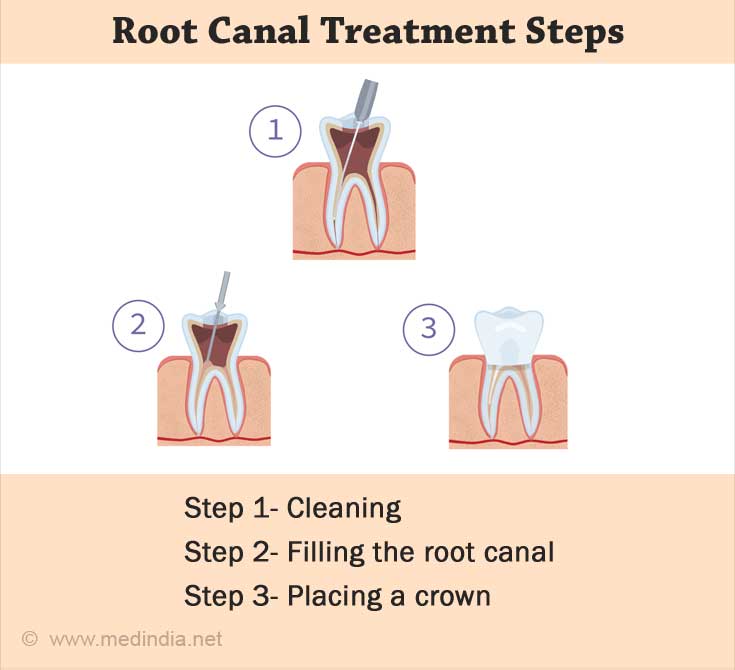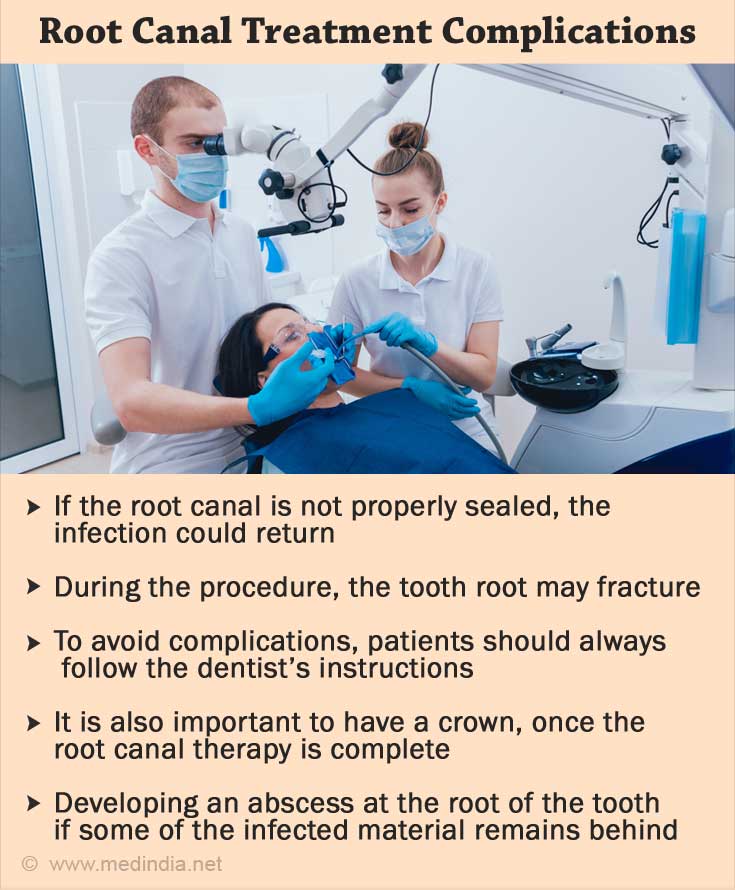- Root Canal Treatment - https://www.nhs.uk/conditions/root-canal-treatment/
- About Root Canal Treatment - https://www.betterhealth.vic.gov.au/health/conditionsandtreatments/root-canal-treatment
- What is a Root Canal? - https://www.aae.org/patients/root-canal-treatment/what-is-a-root-canal/
What is Root Canal Treatment?
A root canal treatment is a dental procedure that removes the center part of the tooth called the pulp. The term root canal means “inside the tooth.”
A tooth structure is divided into two portions, namely, crown and root. The crown is mainly above the gum, while the roots are below the gum, which attaches the tooth to the jawbone.
Inside the crown and the root is the pulp. It is a hollow-shaped tooth part containing the nerve tissue, blood vessels, and other cells that nourish the tooth and perceive hot and cold temperatures as pain.
Sometimes bacteria enter the pulp of a tooth and cause tooth infection. When this occurs, root canal treatment removes the infected pulp and saves the tooth from extraction.
Understand more about this common procedure to put an end to tooth pain without fear.
Indications of Root Canal Treatment
Many people may not know that they are having an infected tooth. In that case, the following symptoms point out that pulp is damaged:

- Chronic tooth pain radiating to the jaw, face, head, or other teeth.
- A pain-like sensation that lingers for more than a few seconds while consuming hot or cold items.
- Swollen or tender gums with pus collection
- Pus from the infected tooth may cause an unpleasant taste or smell.
- The tooth becomes mobile after the pus from the infected pulp softens the bone that supports the tooth. Swollen Jaw due to sometimes the pus drainage getting blocked
- Tooth looks darker due to the tooth pulp becoming infected, and blood supply to the tooth getting affected.
- Pain while eating or touching the tooth means the nerves around the pulp are damaged.
- Broken teeth due to accidents make way for bacteria into the tooth pulp.
Root Canal Treatment Steps
People usually believe in the myth that root canal treatment is painful, but this procedure is completely painless. It is carried out under local anesthesia or sedation so that the patient cannot feel what is happening around that area.
Root canal treatment is carried out in three steps and takes place within one or three sessions in a dental clinic.

Step1: Cleaning — The first step is cleaning the root canal and then a hole is made at the tooth surface to remove the infected pulp.
Step2: Filling the root canal — The next step is related to the purification of the hollow area, and shape. Then a rubber-like material is filled in the tooth and they are sealed with the help of the adhesive cement.
After the removal of the infected pulp, the tooth is dead. The patient will no longer feel any pain.
Now the tooth has to take the help of the adjoining tissues for nutrient supply and so it becomes fragile over time hence it requires support from Crown
Step3: Placing a crown —. Placing a crown over it provides support to the tooth and protects it from the surrounding environment.
Follow-Up Care
- The tooth and gums might be slightly painful when the numbing anesthesia wears off. Gums might also swell. Dentists will prescribe pain medications such as acetaminophen (Tylenol or Crocin) or ibuprofen (BrufenorAdvil) to relieve the pain. If the pain becomes extreme or lasts for more than a few days, consult with your dentist.
- The dentist will see you within a few days of the root canal treatment to make sure that the infection is gone. They will also replace the temporary filling with a permanent filling
- You will be able to return to your normal routine the day after the procedure itself, but avoid chewing with the damaged tooth until a crown is placed over.
- Continue with your regular oral hygiene measures, don’t neglect to brush your teeth twice a day.
Complications
Like any other procedure, complications too can occur in root canal treatment.

- Sometimes the dentist may not be able to completely remove the infected pulp, this can spread into the surrounding jaw bone.
- If the root canal is not properly sealed, the infection could return.
- During the procedure, the tooth root may fracture, or the instruments can break in the canal. This makes it hard to fill the tooth effectively.
- If complications occur, a dental specialist called an endodontist can correct the problem and complete the root canal procedure.
- To avoid complications, patients should always follow the dentist’s instructions. If an antibiotic is needed, it is important to finish the entire prescription. It is also important to have a crown, once the root canal therapy is complete.
- Another risk is developing an abscess at the root of the tooth if some of the infected material remains behind or if the antibiotics aren’t effective.
Root Canal Treatment Cost
The cost of root canal treatment varies widely, but saving the tooth with a root canal is relatively cost-efficient. If you opt for tooth removal, the cost of an implant or denture to replace the tooth afterward is usually more expensive.
Extraction can also lead to malocclusion or misaligned teeth, and difficulty chewing.
If the tooth cannot be saved by root canal treatment, the next best option is an implant. However, saving the natural tooth is best because nothing functions as well as a natural tooth.
 MEDINDIA
MEDINDIA

 Email
Email








Root canal treatment is needed for two main reasons. The first is infection. An untreated cavity is a common cause of pulp infection. The second reason is A fracture in a tooth can damage the pulp.